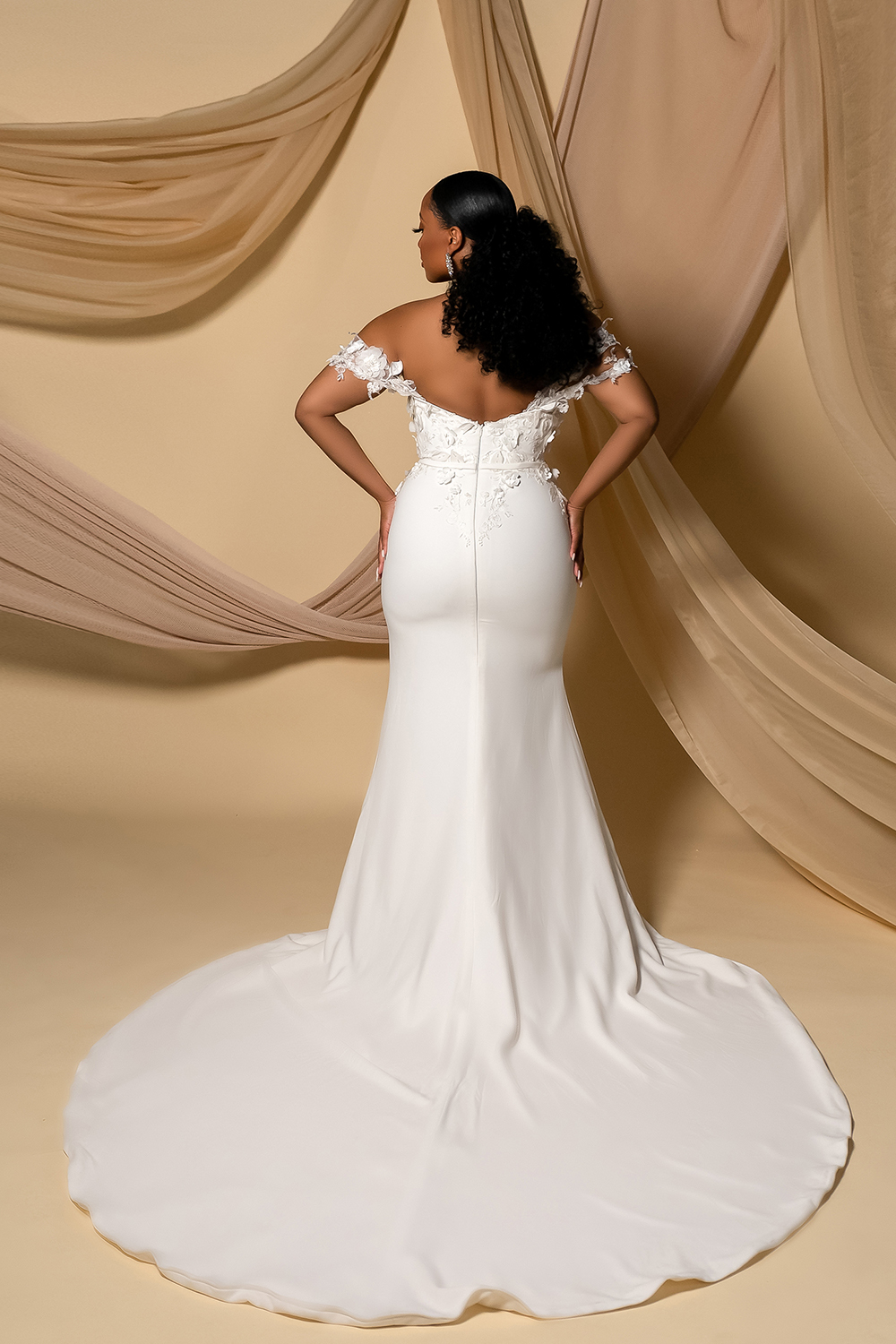

by Raquel Laneri

Late in the second season of the Amazon fashion-design competition series Making the Cut, the three finalists had to design a pop-up concept store for their brand—and create eight new looks to put inside it.
The idea of constructing eight new outfits in a matter of days would send most designers into a panic. Yet Andrea Pitter, Fashion Design ’11, barely broke a sweat. She whipped up piece after killer piece at a breakneck pace with astonishing poise, leaving her peers gobsmacked.
“I had no choice!” the Brooklyn-based designer behind Pantora Bridal says when asked how she managed such grace under pressure. “So much of how I was able to maneuver on the show is because I’ve had the experience of not having enough,” Pitter explains. As a Black woman, the daughter of immigrants with no connections to the fashion industry, “I’ve had to be really resourceful.”
Check out this Hue Live interview with Andrea Pitter about her life, her work, and what she plans to do with the $1 million prize.
Pitter initially had no interest in being on a reality show, but after receiving three emails from three separate people urging her to apply to Making the Cut, she decided to look into it. She was impressed that the show focused on already established independent designers, and came with a $1 million-dollar prize along with feedback from Heidi Klum and fashion mentor Tim Gunn, who both left Project Runway to develop the Amazon show.
“I was like, ‘The worst that can happen is that you might win,’” she recalls with a laugh.
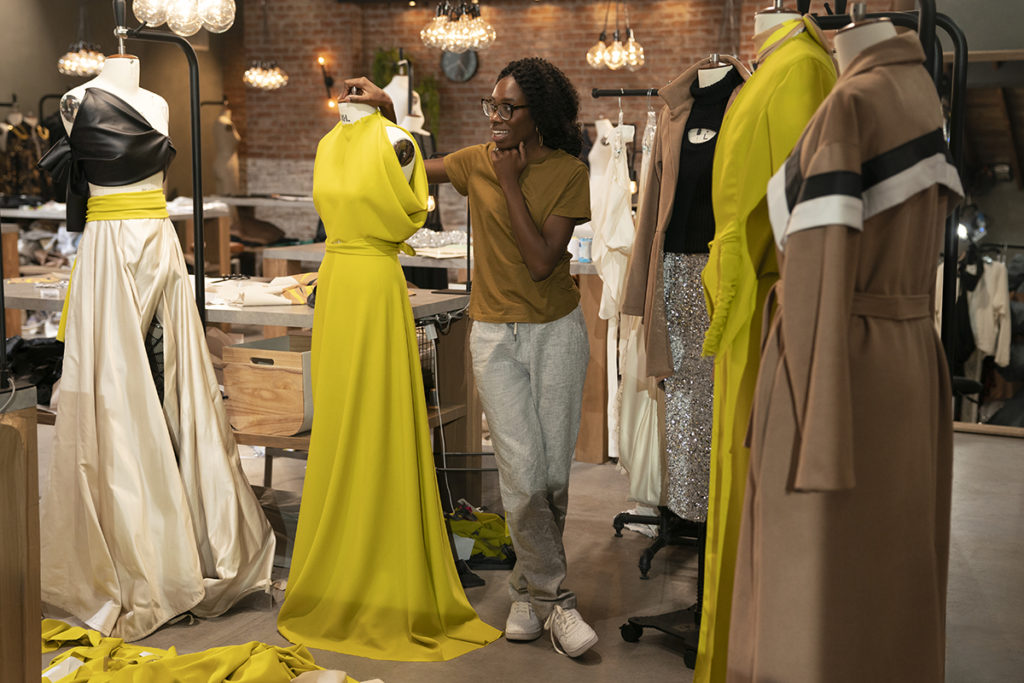
In August, Pitter indeed won Making the Cut: Season 2, earning her the million dollars, a mentorship and an exclusive Pantora ready-to-wear line at Amazon Fashion. From the first challenge to her triumphant final collection, Pitter consistently sent out exuberant clothes that celebrated women of all sizes: a camel bathrobe coat with tons of swagger, a sexy denim skirt with cutouts and a matching bubble jacket, a sizzling geometric-print one-piece swimsuit. The judges were particularly wowed by her bridal look, a feathery halter top paired with a full white ball skirt, cast off on the runway to reveal a feathered jumpsuit.
“I want to create clothing that people find joy in but also aren’t intimidated by,” Pitter says. “I remember growing up and having our dress-up clothes, and I was like, ‘Why are we waiting for something special to happen to get dressed?’ I want to feel like waking up is enough to celebrate.”
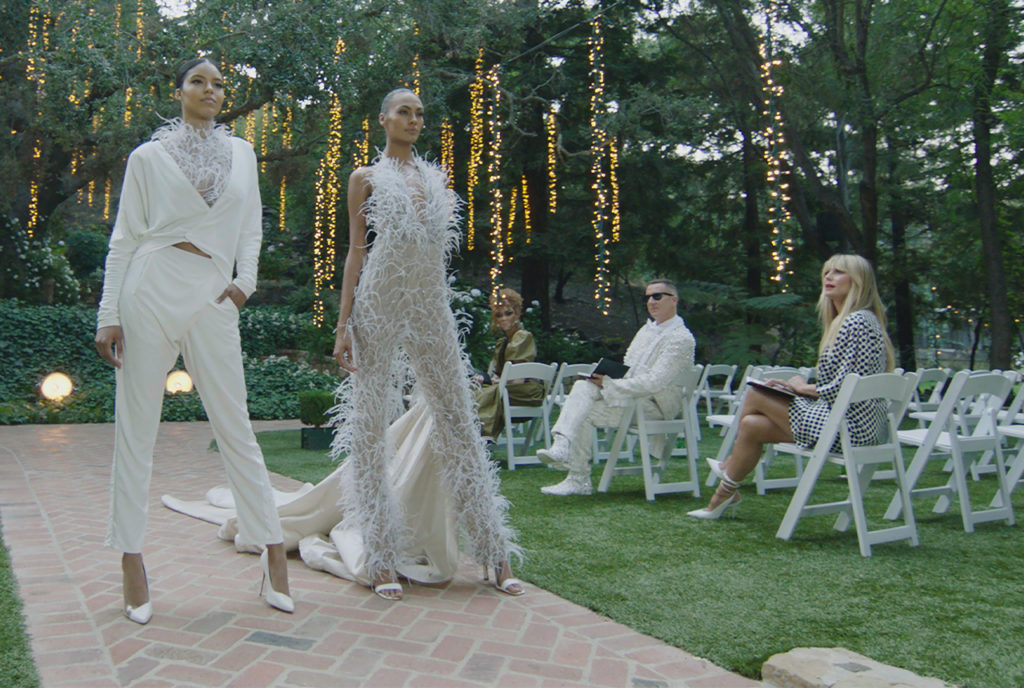
***
Pitter grew up in the Crown Heights neighborhood of Brooklyn, the daughter of Jamaican immigrants. She designed her first garment when she was 8 years old: a vest made out of a paper butcher’s bag that she wore to a science fair. By eighth grade, she had a business, selling backpacks she made out of bandannas to her classmates. “I would sew them together and run drawstrings through them,” she recalls. “And I would take custom orders, so you could get them reversible.”
She came up with her brand name, Pantora, a mashup of her first, last, and middle names, when applying to the High School of Fashion Industries in Manhattan. When it came to college, she set her sights on FIT. “I didn’t see myself going anywhere else,” she says.
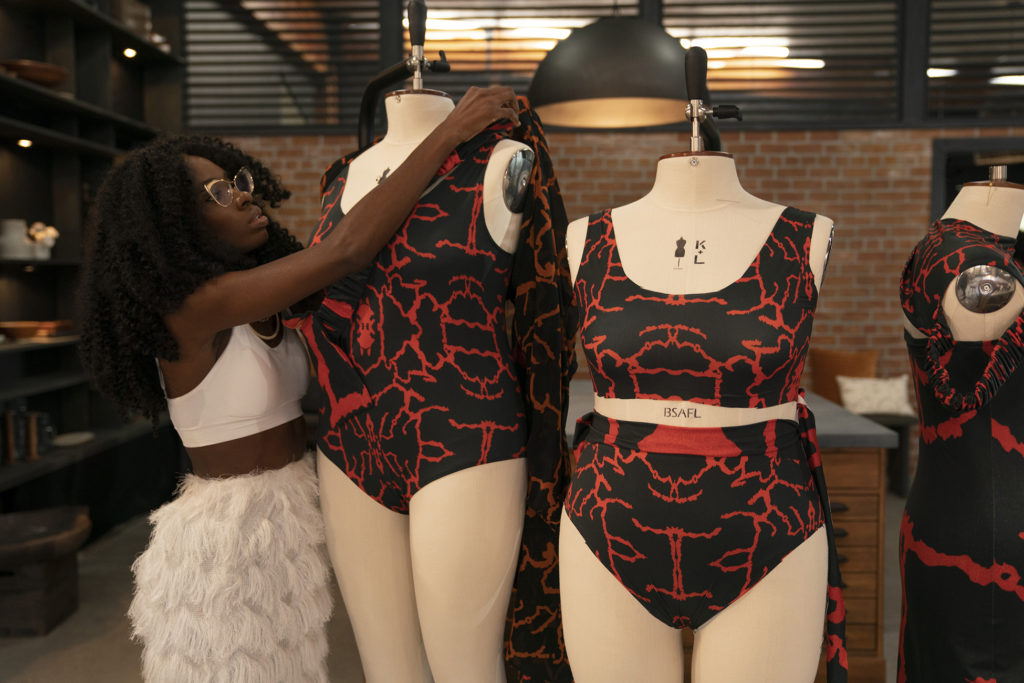
At FIT, Pitter—always a technical whiz—fell in love with bridal wear. “I was intrigued by the construction techniques and by being a part of people’s stories,” she says. She also remembers running into Ethiopian-American designer Amsale Aberra ’82, a trustee at the college, who would later become an inspiration and model for Pitter’s own career. (Aberra died in 2018.) “She was at the forefront of fashion as one of the very few Black bridal designers,” Pitter says.
She received her first wedding dress commission as a sophomore, unofficially launching Pantora Bridal, and in 2013, at 23, she opened her Brooklyn showroom with a $4,000 loan and $4,000 from her savings.
Pitter wanted to create a “safe space” for her brides, particularly for brides of color.
“You don’t often see Black brides in publications, and you don’t necessarily see curvy brides in publications,” she says. That lack of representation led to larger issues, such as darker-skinned brides not being able to find linings that matched their complexions, or being told that their hips were too big for certain styles.
In 2016, Pitter debuted Forgotten Skin Tones, a range of illusion mesh and linings that caters to women with different complexions. She also adapted the size chart based on data collected from a range of body types. “I was really seeking to solve the problems that I knew Black brides would face,” she explains. “Wedding dress shopping—it’s supposed to be the happiest time of [a client’s] life, and I wanted to figure out how to make [the process] feel more intimate: like we created this for you specifically.”
***
Pitter never wanted to abandon bridal, but in recent years she wanted to stretch her wings.
“I don’t think that bridal designers are regarded in the fashion industry in the same way other designers are … I don’t know that they get the respect that other designers receive,” she says. “But also, I wanted to maybe operate a bit differently, where I didn’t have to go in so solution-oriented and was able to do things that make me happy and that I could really share with the world.” Also, after creating so many white dresses, “I wanted to be able to operate in color.”
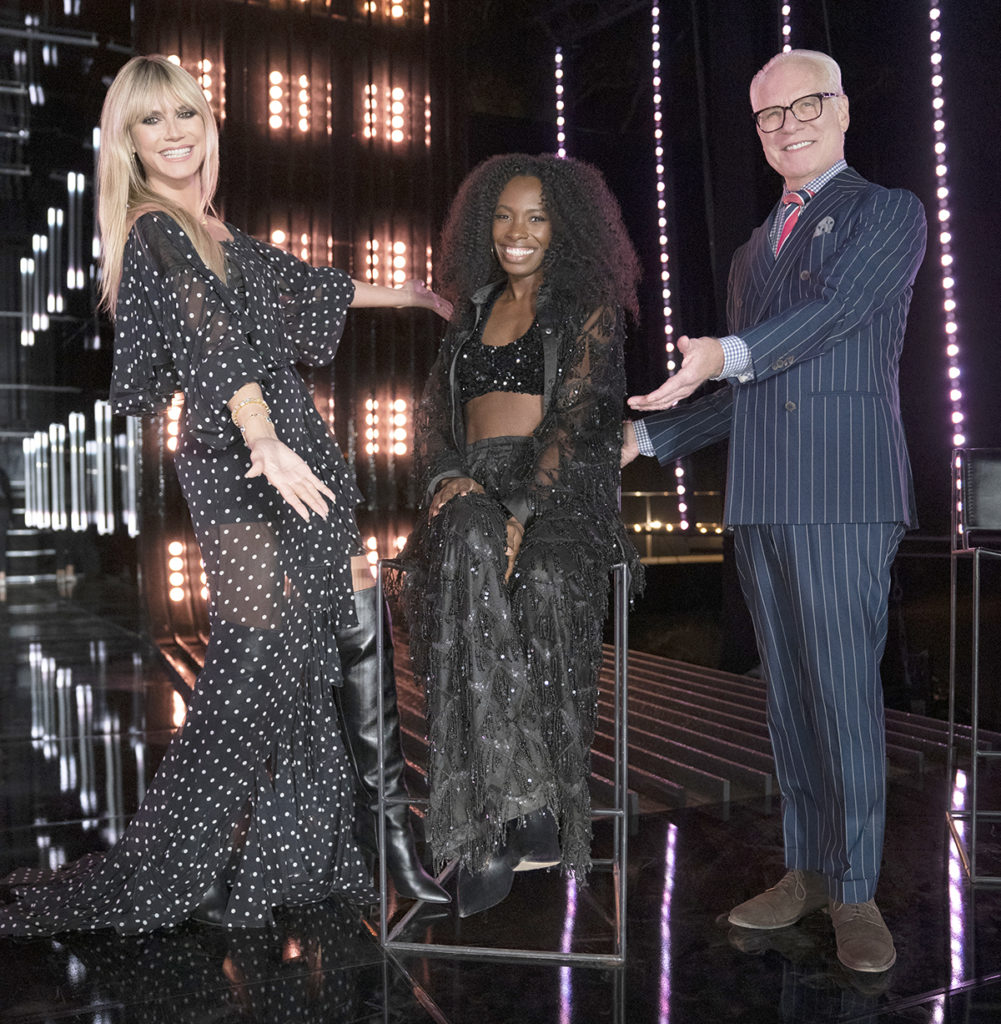
Her ready-to-wear collection—the result of her reality show win—certainly takes advantage of her new freedom: sequin disco-flavored tiger-print jumpsuits, bright yellow houndstooth pantsuits, an oversized camo blanket coat. Pitter has used the prize money to help launch this new line—available on the Pantora website and Amazon—and open two new stores in L.A., a ready-to-wear shop in October and a bridal boutique in December.
That expansion is key to Pitter’s mission: to create clothes that celebrate the wearer, no matter her age, size, skin tone, or abilities. Now, with the prize money and Amazon partnership, she can spread that joy to even more people, every day of the year.
“It’s celebratory staples,” Pitter says of her aesthetic. “I really want [women] to feel like every day is worth getting dressed for.”

Cut but Undeterred
Fifth-place Raf Swiader, Fashion Design ’03, reflects on the show
Andrea Pitter wasn’t the only FIT grad to make a splash on Making the Cut. Raf Swiader charmed viewers the instant he appeared on screen, wearing a muscle T-shirt, a pearl-drop earring, and an irrepressible smile.
Yet the designer behind the “gender optional” label R.Swiader admits he was terrified.
“I’ll never forget walking into the studio and realizing everyone showed up with patterns and suitcases full of stuff and tools,” Swiader says. “I just brought my little briefcase, and I was like, ‘Oh my God, this is serious! I should have prepared more!’”
Swiader grew up in Poland but moved to New York City when he was 16 to pursue a career in fashion. After graduating from FIT, he worked for the women’s wear designer Olga Kapustina and menswear designer John Varvatos before starting his own line in 2015—inspired by a 17th century worker’s shirt he found while honeymooning in Paris.
“I basically wore that thing the entire trip,” he recalls. “I decided to do a collection based off that shirt. And that was the beginning [of R.Swiader].”
That easy, loose, romantic but practical spirit imbued the clothes he designed on Making the Cut, including a striped sarong, a cloud-like tulle and denim gown, and all manner of slouchy culottes. His clothes, along with his sunny personality and moving backstory about growing up gay in conservative Poland, made him a fan favorite.
“I’ve had people recognize me on the street,” Swiader says, adding that sales on his website have increased since the series aired. Though he didn’t win, the shy designer is happy that his husband convinced him to go on the show. “It just gave me more inspiration when I came back to push my designs and brand further, and carry on,” he says.
